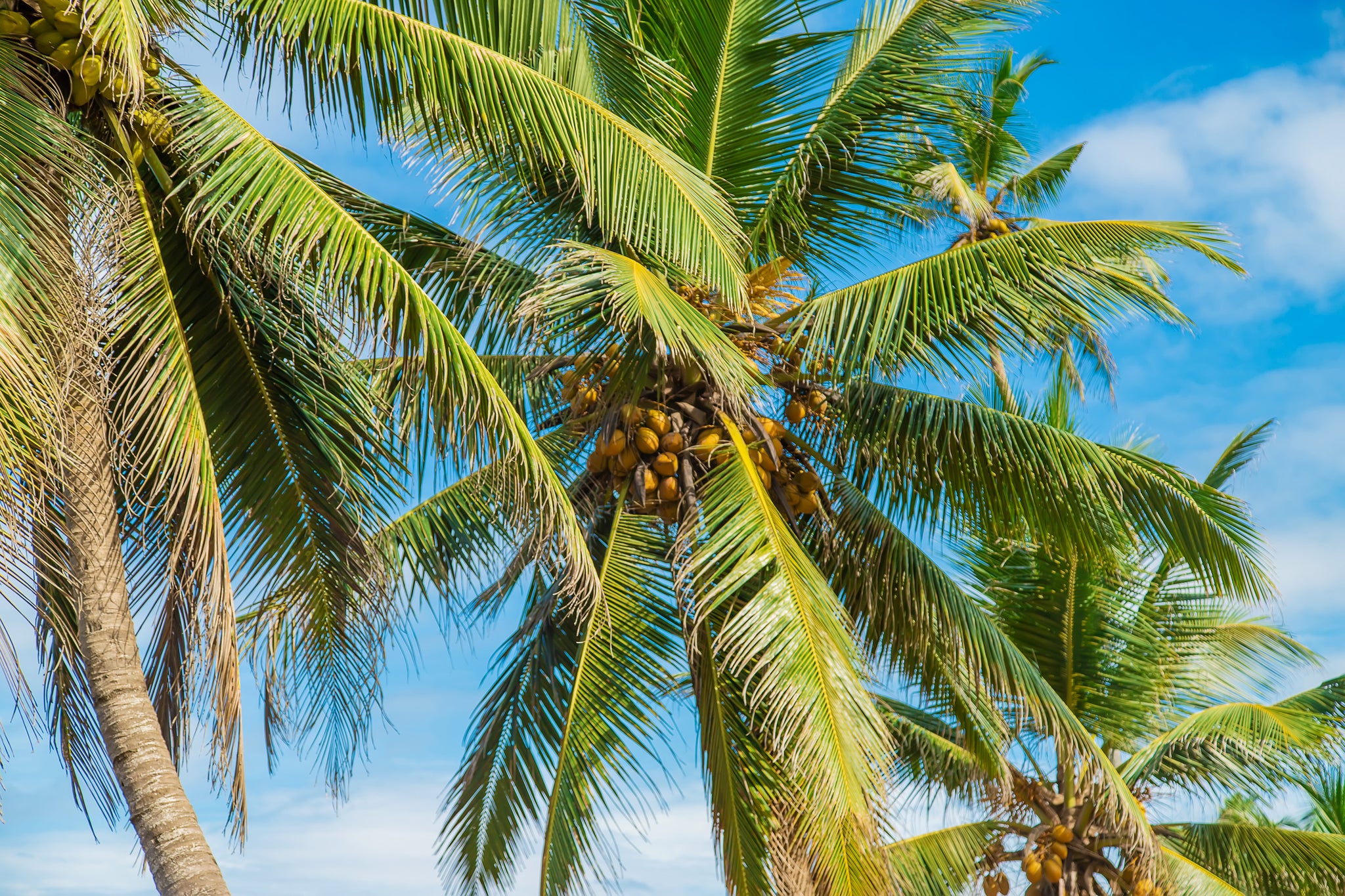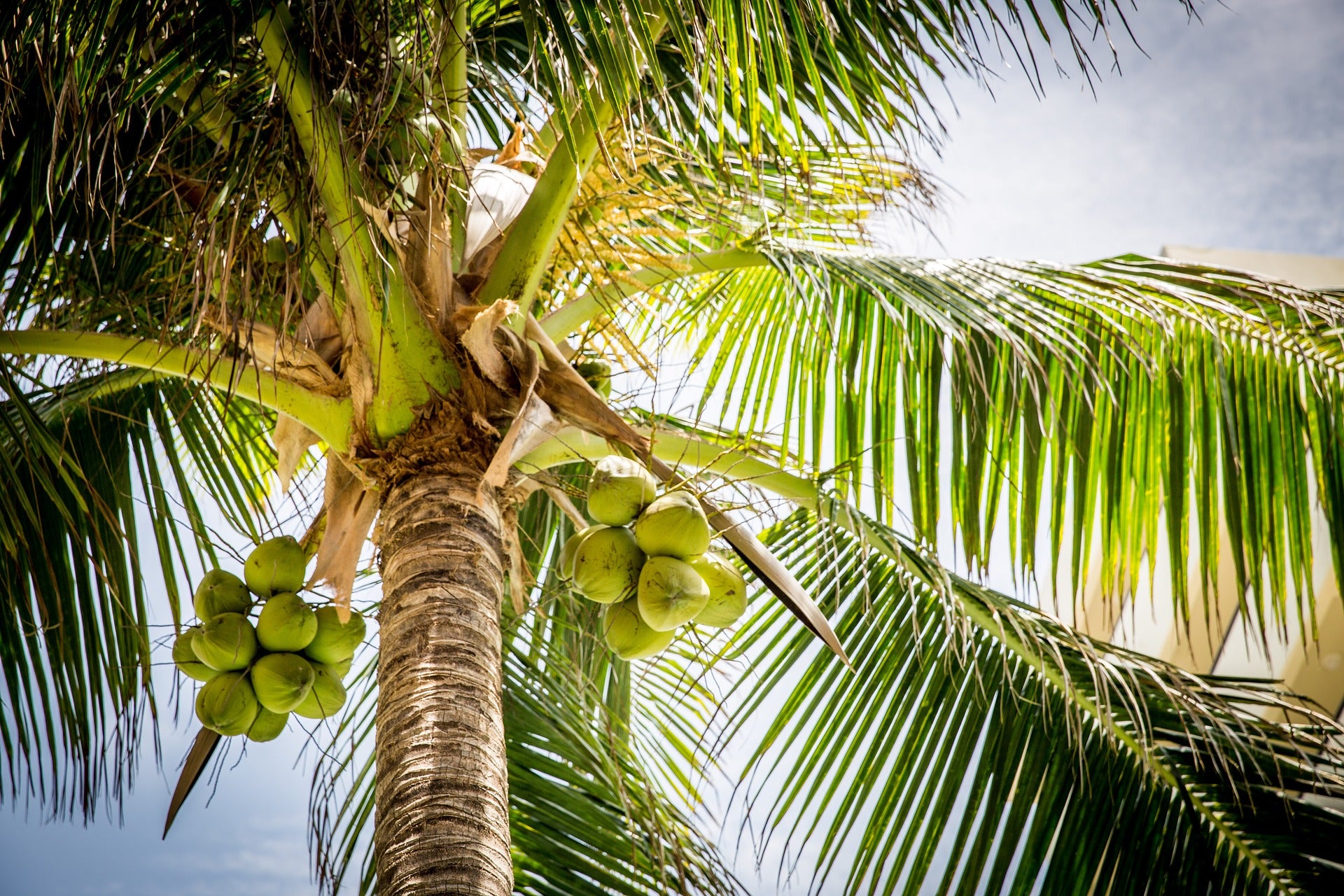Ever wondered how many trees are out there? It's a huge number! Scientists estimate that there are over 3 trillion trees worldwide, belonging to more than 60,000 species. Trees are incredible. Did you know the world's tallest tree, a Coast Redwood named Hyperion, stands over 380 feet tall? Or that the Giant Sequoia is the largest tree by volume? Each type of tree has its own unique role. Some, like the "Ironwood" tree, are known for their incredibly hard timber. Others, like the quaking aspen with its shimmering leaves, are known for their beauty. We rely on them for so much, from the air we breathe to the materials we use every day.

But there is one special tree that truly stands out. It's often called the "Tree of 1000 Uses" because almost every part of it, from its roots to its leaves, is helpful for food, shelter, or tools. Here's a hint: this tree is common in tropical, coastal areas, and its fruit is often associated with the beach. Do you know which tree is known as the "Tree of 1000 Uses"? In this article, we'll take a look at this amazing plant and explore all the incredible ways it helps people around the globe.
ALSO READ| Which Tree Is Known As the Tree Of Life?
Which Tree Is Known As The "Tree Of 1000 Uses"?

The tree known as the "Tree of 1000 Uses," or sometimes the "Tree of Life," is the Coconut Palm (Cocos nucifera). This tall, slender palm is a staple in coastal tropical regions worldwide, thriving particularly in countries such as Indonesia, the Philippines, and India. It earns its nickname because virtually every part is valuable to humans, ensuring the survival of those who live near it.
The fruit provides nutritious water, meat, and oil for food and drink, while the leaves, husk, and trunk are used for everything from roofing and weaving to fuel and building materials. It truly is a remarkable and essential resource for millions of people.
IN CASE YOU MISSED| What is the Scientific Name of the Banyan Tree?
10 Lesser-known Facts about the Coconut Tree

- Botanically, a coconut is a drupe (a stone fruit) like a peach or cherry.
- During World War II, coconut water was used for emergency intravenous (IV) transfusions due to its sterile and electrolyte-rich properties.
- Coconuts are natural ocean swimmers and can float for vast distances to spread and grow on new shores.
- Warriors in some Pacific islands, such as Kiribati, historically made battle armour from woven coconut fibre (coir).
- The sound of a horse trotting in the film Monty Python and the Holy Grail was made by clapping two coconut halves together.
- A tall coconut palm can live for up to 100 years and continue producing fruit.
- The three minor circular marks on the hard inner shell are often called the "monkey face" or "eyes".
- The wood from the trunk, known as coco lumber, is strong and is used as a sustainable alternative for building.
- Coconut oil is explored as a base for biodiesel and biofuel production.
- Even the roots of the coconut tree have uses, often being boiled to make natural dyes and traditional medicines.
Conclusion

The coconut palm is far more than just a pretty symbol of the tropics; it's a testament to nature's incredible generosity. Its unparalleled versatility, providing sustenance, shelter, and materials, has earned it legendary status spanning continents and cultures. From its life-giving water to its durable fibre, this single tree has sustained and enriched human life for centuries, making it one of the planet's most essential and celebrated plants.
WHAT'S NEXT| List of Smallest Trees in the World
Comments
All Comments (0)
Join the conversation